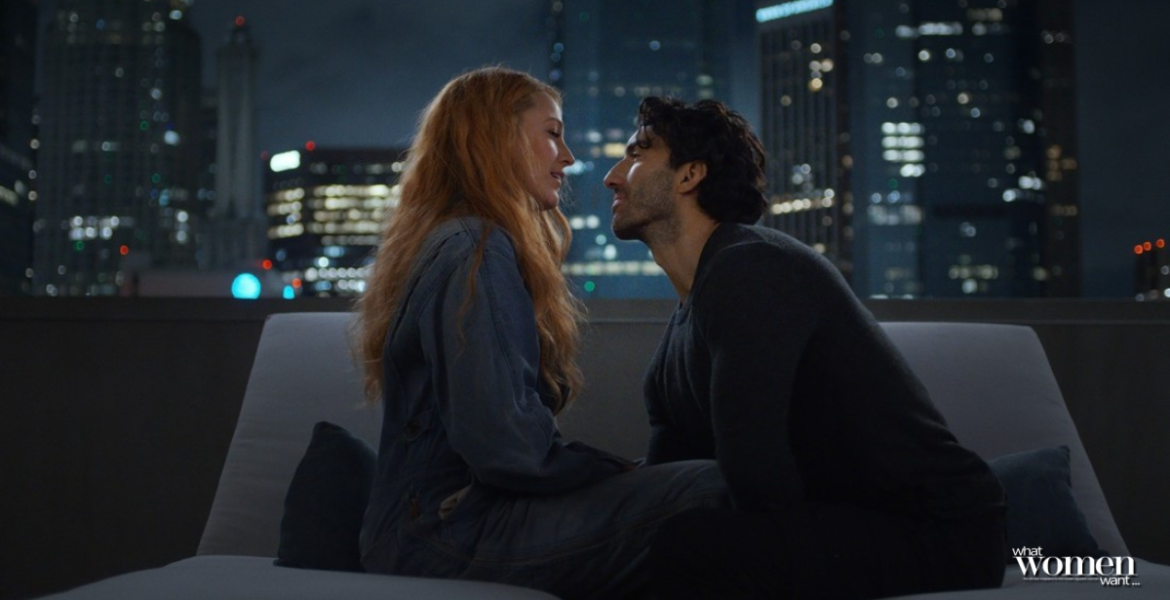There has been an ongoing debate all over social media about the film adaptation of Colleen Hoover’s bestselling novel, “It Ends With Us.” On one hand, people are criticizing the film and saying that they are romanticizing and glorifying abuse and domestic violence. On the other hand, others are praising the film for its realistic portrayal of the cycle of abuse. Ultimately, the book and its film adaptation have sparked conversations about the proper way to handle these sensitive topics in media, especially in the romantic genre.
In 2019, Justin Baldoni bought the rights of the novel for a film adaptation, produced through his Wayfarer Entertainment company. In January 2023, Baldoni casted Blake Lively in the role of Lily Bloom. Baldoni, who plays Ryle Kincaid, directed the film and Christy Hall adapted the script.Brandon Sklenar was cast to play the role of Atlas.
Plot Overview:
“It Ends With Us” tells the story of Lily Bloom, a young woman who embarks on a seemingly idyllic romance with neurosurgeon Ryle Kincaid. Their relationship, however, is marred by the sudden and shocking revelation of Ryle’s abusive tendencies, a twist that forces Lily to confront the echoes of her past and the complexity of her emotions. The narrative weaves through Lily’s internal struggle and her relationships, including her previous love interest, Atlas Corrigan, who re-emerges as a symbol of her past.
The film does well to highlight the initial allure of the romance and the slow unraveling of Ryle’s darker side. Ryle’s physique and his corny one-liners captive the viewers. We, the audience, slowly fall for him as Lily falls for him, through seemingly endless montages – a true stable of the genre. Through Lily’s eyes, viewers experience his seductive charm that masks the sinister reality of the emotional and physical abuse. The portrayal of Ryle’s character offers a taboo and often uncharted point view of why women do not leave abusive relationships. “It Ends With Us” proposes that love can and is a big part of abusive relationship and it is much more complex than people assume.
Romanticizing or Realistic?
One of the most compelling and justified criticisms of the film is whether it romanticizes the very abuse it seeks to denounce. The depiction of Lily’s internal conflict and her reluctance to leave Ryle, despite the mounting evidence of his abusive nature, is a poignant reflection of the real-life struggle many victims face. The film portrays the emotional manipulation, denial, and gaslighting that often accompanies abusive relationships.
However, there is a fine line between illustrating the complexities of such relationships and glorifying them. Some argue that the film’s emphasis on the redemptive qualities of Ryle and the idealization of Atlas as a perfect counterpoint could risk trivializing the severity of abuse. In reality, yes, abusers are human beings and they often have their own trauma that caused them to be the way they are. But, the question that arises is whether in this societal environment, where abuse and rape is a reality for many women. The romanticized elements, particularly the idealized resolution and the picturesque depiction of Lily’s escape and healing, may inadvertently oversimplify the long-term psychological impact of abuse. Healing is not a linear process. It often involves a lot of back and forth and a lot of courage to finally leave.
Cinematic and Emotional Impact
From a cinematic perspective, “It Ends With Us” is visually compelling, with cinematography that sometimes falls into stereotypes of the genre. But, it is important to note that it does not fail to convey the emotional gravity of the story. The film effectively uses its visual and auditory elements to enhance the viewer’s connection to Lily’s experiences and the tumultuous nature of her relationship with Ryle.
Emotionally, the film prompts significant reflection on the nature of love, control, and self-worth. It challenges viewers to empathize with Lily’s plight and understand the difficult decisions she faces. The portrayal of her journey, despite its flaws, brings crucial visibility to the issue of domestic abuse and fosters important conversations about its representation in media.
Character Dynamics and Depth
“It Ends With Us” falls short with characters that are not well-developed. Lily’s emotional journey is depicted without depth. The internalization of trauma and the grappling with personal agency are portrayed with a lack of nuance. The film does not delve into these issues and fairly gives the time they deserve. Ryle’s transformation from charming to abusive feels somewhat abrupt, potentially undermining the film’s attempt to show the gradual escalation of abuse in real life.
Atlas, as a symbol of an idealized, supportive love, serves as a stark contrast to Ryle. This dynamic, while compelling, risks falling into the trap of creating a “savior” trope, which can skew the film’s portrayal of healthy relationships and recovery.
In Summary:
“It Ends With Us” is a film that straddles the line between providing an authentic portrayal of domestic abuse and falling into the pitfalls of romanticizing trauma. Its strengths lie in the raw depiction of emotional complexity and the challenges faced by those trapped in abusive relationships. However, its potential shortcomings in depicting the long-term consequences and the idealized resolutions could detract from its overall impact.
Ultimately, the film sparked important conversations about abuse, but audiences must view it with a critical eye. While it brings much-needed attention to a pressing issue, the way it navigates the narrative requires viewers to engage thoughtfully with the themes presented. The film’s portrayal is a starting point for discussions about how we represent and understand abuse, making it both a significant and contentious addition to the cinematic landscape.

